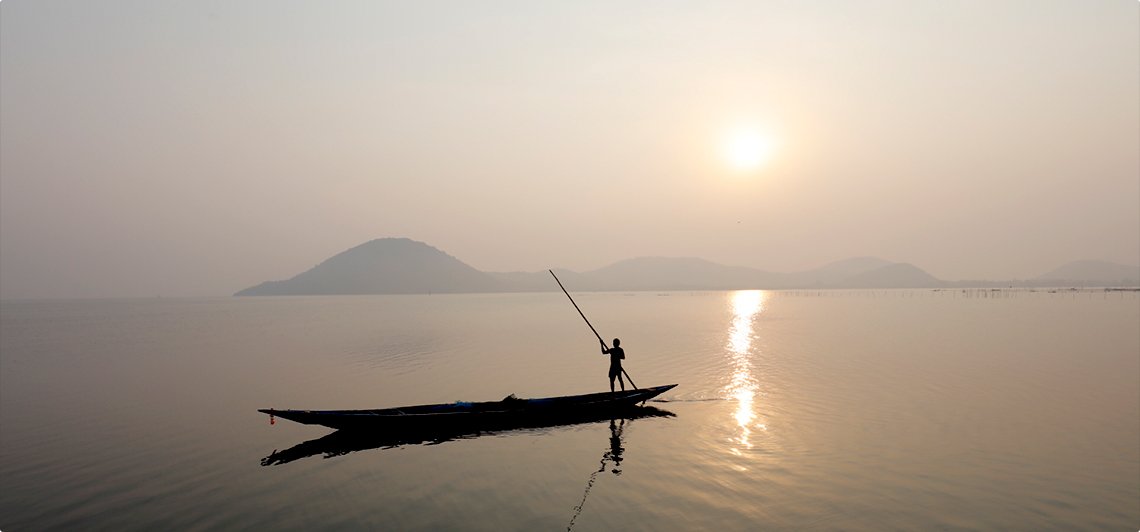Introduction
Pipili, located on the Bhubaneswar–Puri highway in Odisha, is a vibrant and culturally significant village world-famous for its colorful appliqué work. Known locally as “Chandua Kala”, this age-old craft is visually stunning, deeply spiritual, and functionally versatile.
Pipili is not just a craft center—it is a living tradition, where every street, home, and shop displays bold and beautiful fabric designs stitched by hand. The appliqué products made here are used extensively in Jagannath Temple rituals, local festivals, weddings, and increasingly in modern fashion and decor.
Location & Accessibility
| Detail | Information |
|---|---|
| 📍 Location | Pipili, Puri District, Odisha |
| 🛣️ Distance from Puri | ~36 km (40 minutes drive) |
| 🛣️ Distance from Bhubaneswar | ~22 km (30 minutes drive) |
| 🚗 Accessibility | Well-connected via National Highway 316, on the way to Puri |
What is Appliqué Work (Chandua Kala)?
Appliqué is a technique where decorative motifs are created by stitching cut pieces of fabric onto a base fabric, creating elaborate patterns and storytelling visuals.
Craft Characteristics
| Element | Description |
|---|---|
| Base Fabric | Cotton, silk, velvet, polyester |
| Motifs | Elephants, flowers, peacocks, sun, moon, conches, tribal symbols |
| Techniques | Chain stitching, patchwork, mirror work, embroidery, layering |
| Design Inspiration | Jagannath Temple rituals, folk tales, nature |
🛕 Spiritual & Ritual Connection with Puri and Lord Jagannath
Pipili’s craft is closely linked to the rituals of Lord Jagannath Temple, Puri.
Traditional Uses in Jagannath Culture:
- Chariots of the Rath Yatra are covered with vibrant appliqué cloth canopies made in Pipili.
- Bimana (temple umbrellas), canopies, flags, and altar backdrops are all crafted here.
- Chandua designs are used during Snana Purnima, Chandan Yatra, and daily pujas.
- The sacred ‘Tahia’ headgear worn by deities during festivals is often stitched in Pipili.
In fact, the origin of Pipili appliqué work lies in temple service, commissioned by kings and temple committees centuries ago.
History of Pipili Appliqué Craft
- The tradition dates back to the 12th century, during the reign of the Ganga kings, who patronized crafts for Lord Jagannath’s service.
- Artisans were originally known as ‘Darjis’ (tailors) and were given land grants to settle in Pipili and serve the temple.
- Over generations, the craft evolved from ritualistic temple service to folk art and commercial design.
Famous Products from Pipili
| Product Category | Use / Significance |
|---|---|
| Chandua Canopies | Temple, home décor, wedding mandaps |
| Umbrellas & Bimana | Ritual use in temples and cultural events |
| Wall Hangings | Decorative, storytelling art panels |
| Bags & Pouches | Fashion accessories with traditional designs |
| Lamp Shades | For homes and festivals |
| Cushion Covers & Bed Spreads | Blending tradition with modern decor |
| Festival Decor Items | Torans, buntings, garden hangings |
Recognition & Achievements
- Geographical Indication (GI Tag) – Pipili Appliqué work is GI certified under Odisha handicrafts.
- Recognized by UNESCO and Development Commissioner (Handicrafts), Govt. of India.
- Widely showcased at:
- Surajkund Mela
- India International Trade Fair
- Odisha Parba (Delhi)
- International Folk Art Festivals
Government Support & Craft Promotion
Key Organizations & Initiatives
- Boyanika – Odisha State Handloom & Handicrafts Co-op
- Website: www.boyanika.com
- UTKALIKA – Odisha State Emporium
- Handloom Export Promotion Council (HEPC)
- INTACH Odisha – Documentation and heritage mapping
Craft Training Centres
- Pipili Handicraft Training Centre – Government-backed, trains youth and women
- Design & Product Innovation Programs – Supported by NIFT Bhubaneswar, SIDAC Odisha
Modern Usage & Global Reach
- Fashion designers are integrating Pipili appliqué into sarees, jackets, bags, and Indo-western clothing.
- Hotels and heritage resorts in Odisha use appliqué lamp shades, wall panels, and cushion covers.
- Online platforms like Amazon Karigar, Gaatha, Craftsvilla, and OdishaArt promote Pipili crafts globally.
- Increasingly used in eco-friendly wedding décor and sustainable gifting.
Live Experience & Craft Tours
- Walk through Appliqué Street in Pipili – see artisans at work in open studios and homes.
- Visitors can watch, learn, and buy directly from craftsmen.
- Pre-booked workshops and group tours available via Odisha Tourism.
Best Time to Visit Pipili
| Season | Why Visit |
|---|---|
| October to March | Pleasant weather, active workshop tours |
| During Rath Yatra (June–July) | Witness preparation of canopies and decorations |
| Odisha Handicraft Festival (December) | Giant installations and cultural exhibits in Bhubaneswar and Puri |
| Feature | Details |
|---|---|
| Craft Type | Appliqué work (Chandua Kala) |
| Origin | 12th century, during Jagannath Temple patronage |
| Primary Use | Temple rituals, décor, festivals |
| Base Location | Pipili, Odisha (Between Bhubaneswar & Puri) |
| Distance from Puri | 36 km |
| Famous Products | Canopies, umbrellas, wall art, bags |
| Recognition | GI-tagged, Govt of India recognition |
| Training & Promotion | Boyanika, SIDAC, Handicraft Dept. |
| Online Stores | boyanika.com, Amazon Karigar, OdishaArt |
| Language of Artisans | Odia, Hindi (basic), some understand English |
Tips for Visitors & Buyers
- Buy directly from the artisans to ensure authenticity.
- Look for hand-stitched details and natural dyes.
- Ideal souvenirs: small lamp shades, cushion covers, mini wall hangings.
- Carry cash for small purchases in local shops, though UPI is widely accepted now.






Leave a Reply